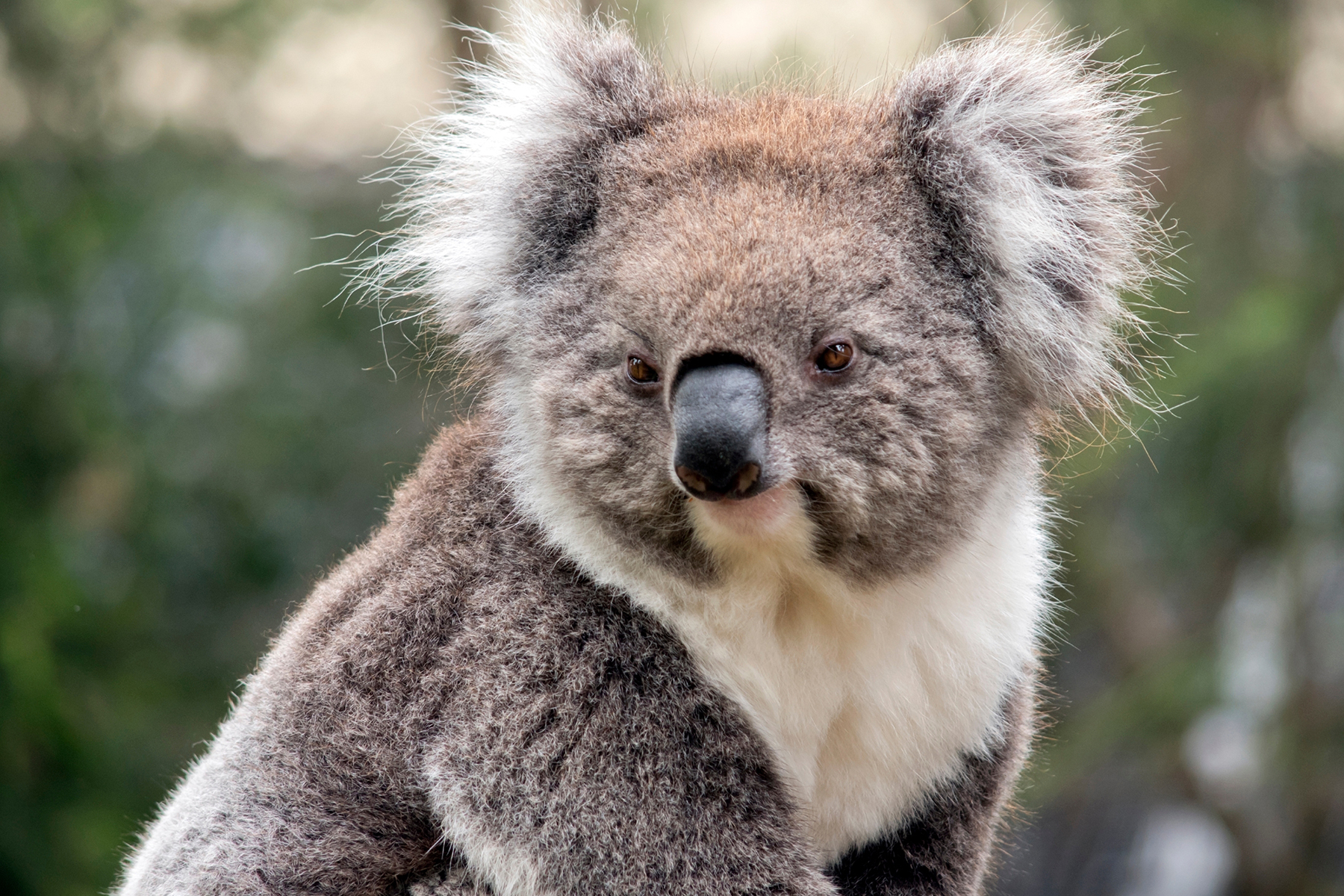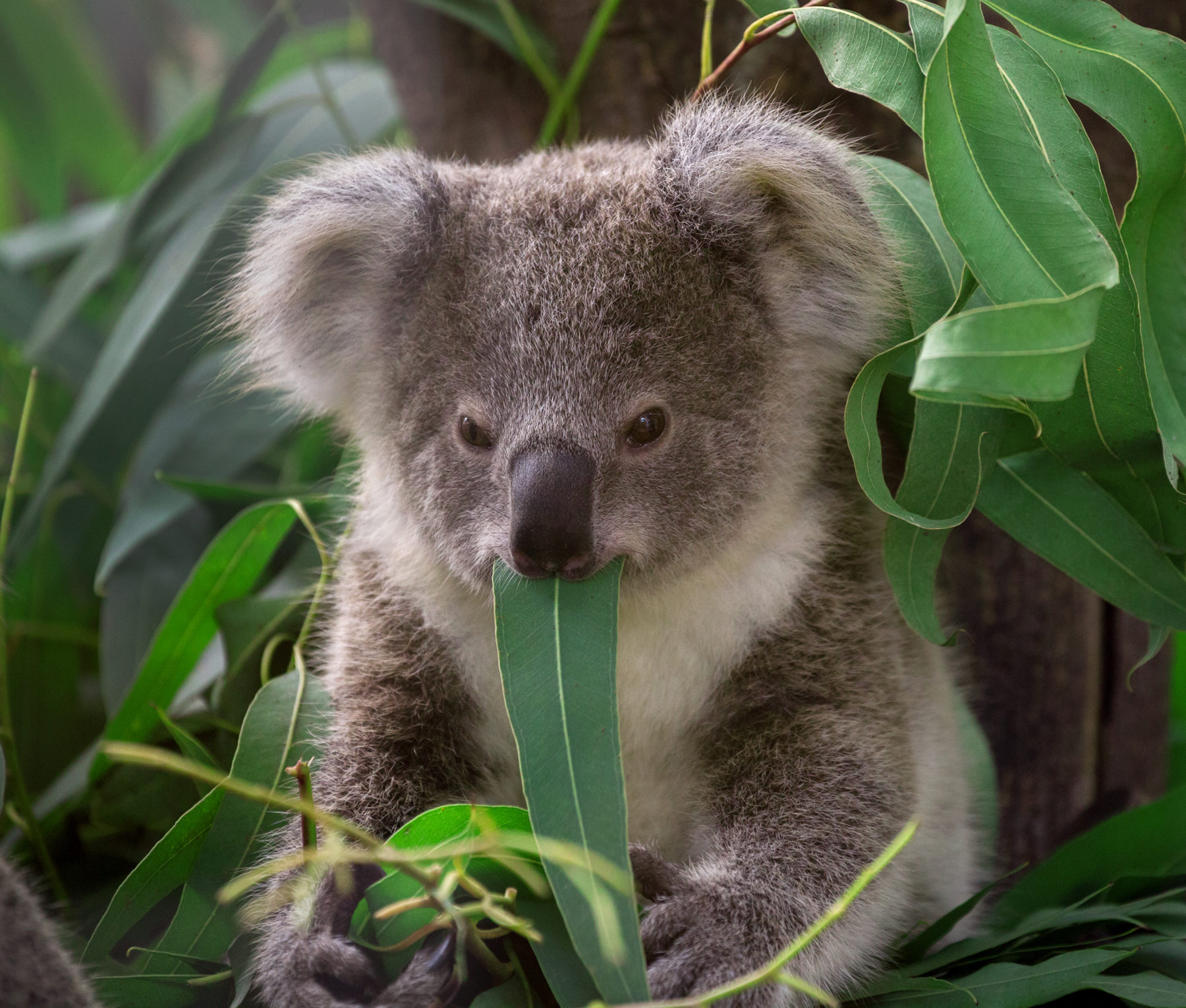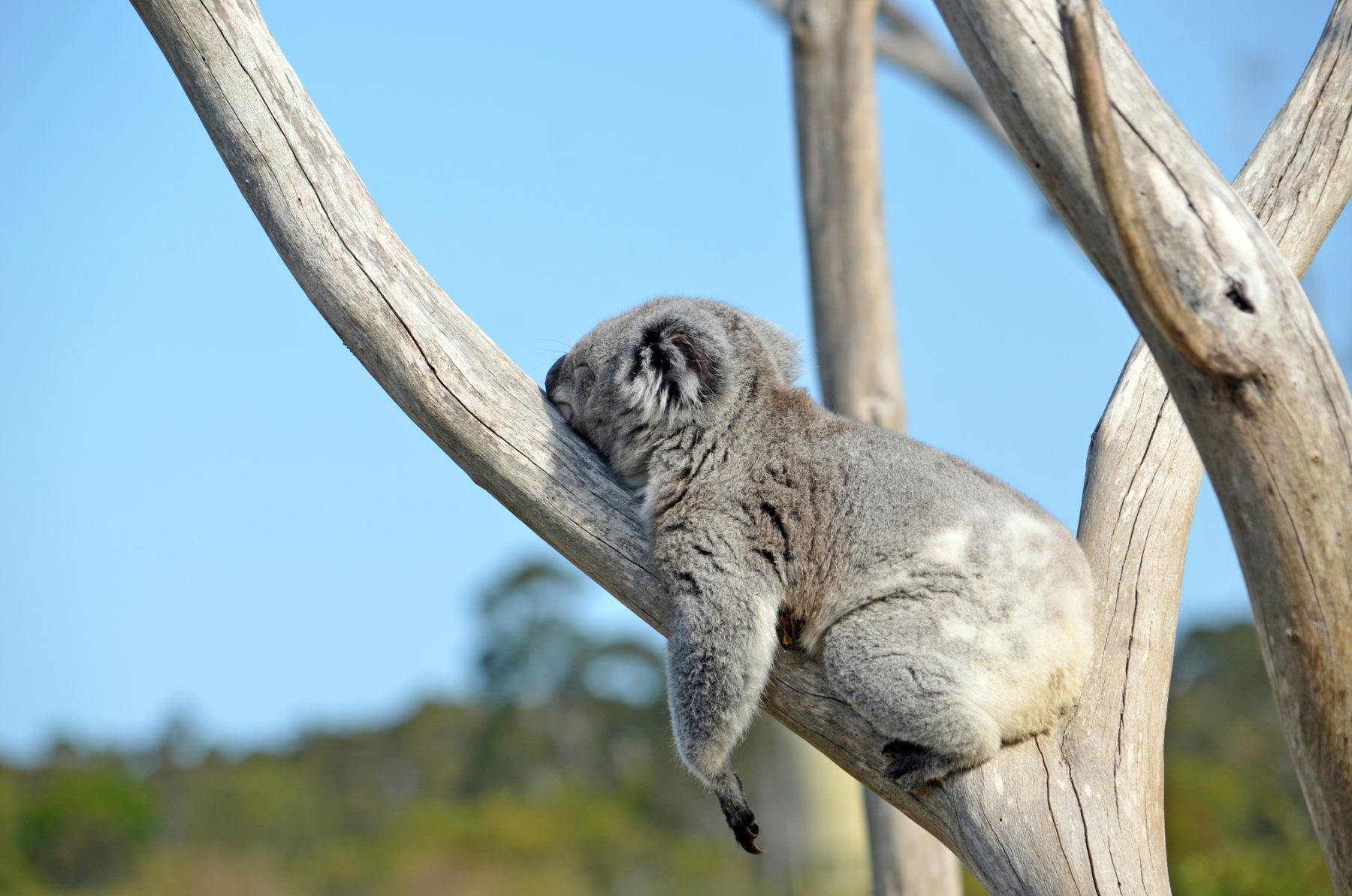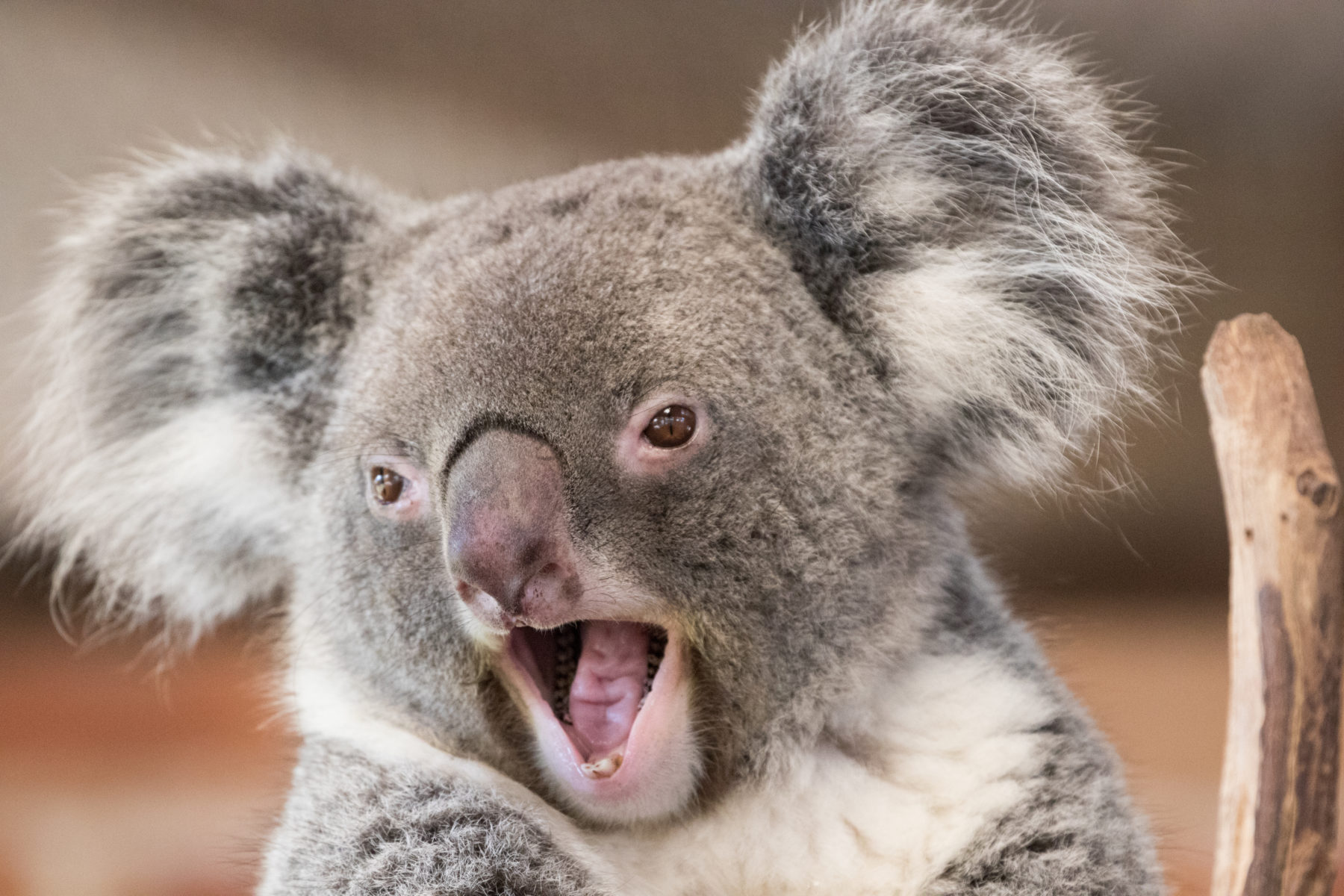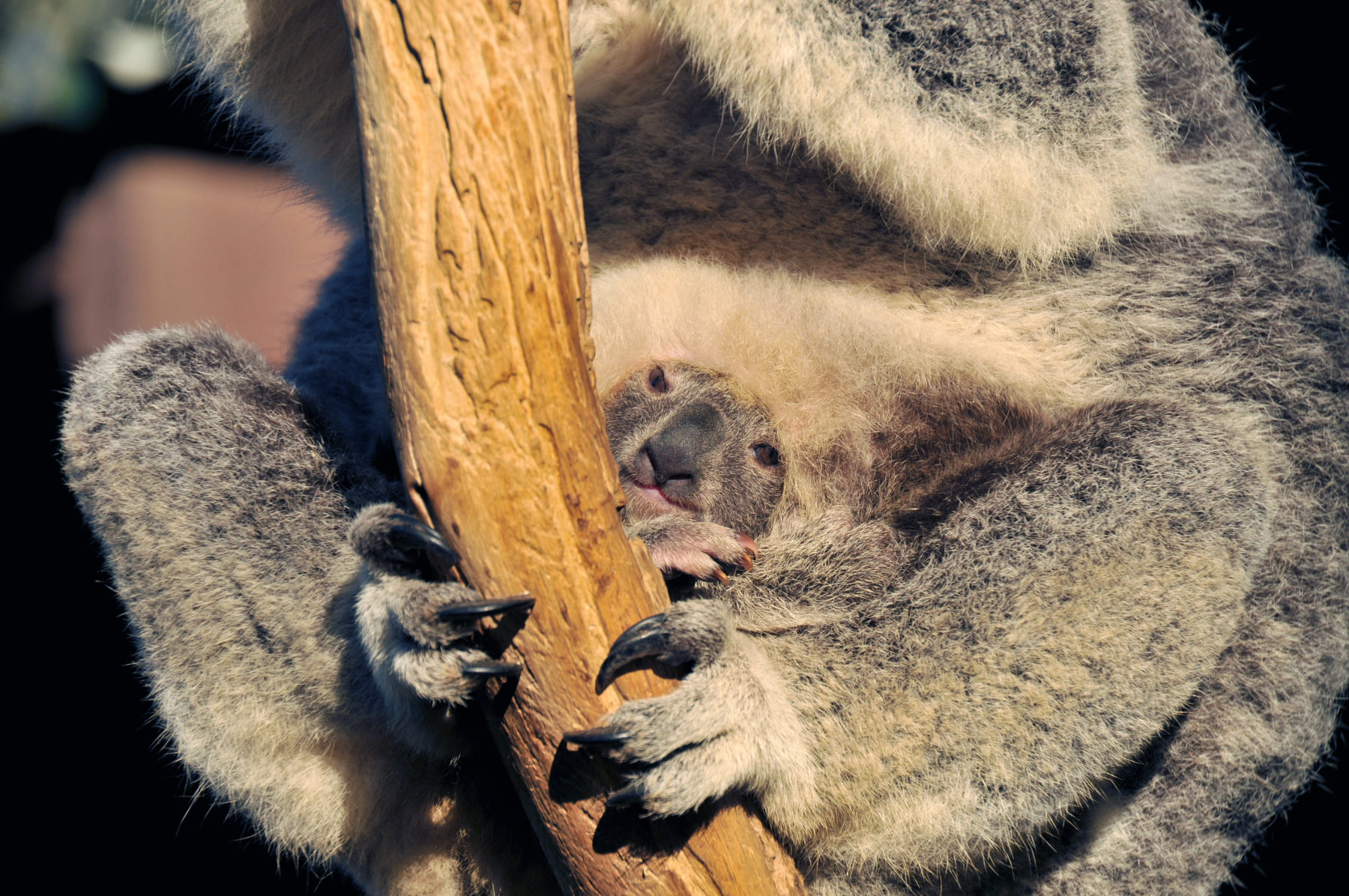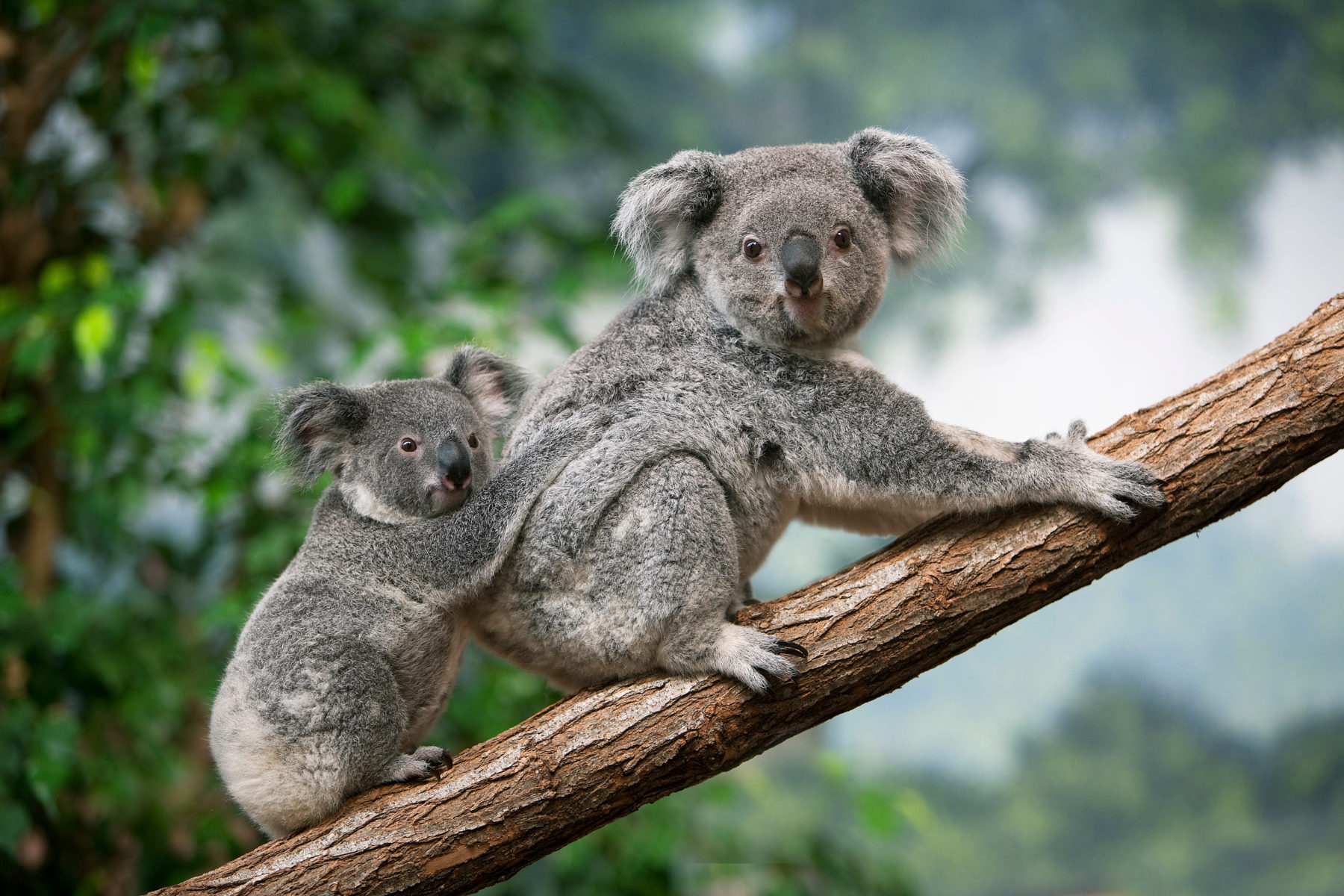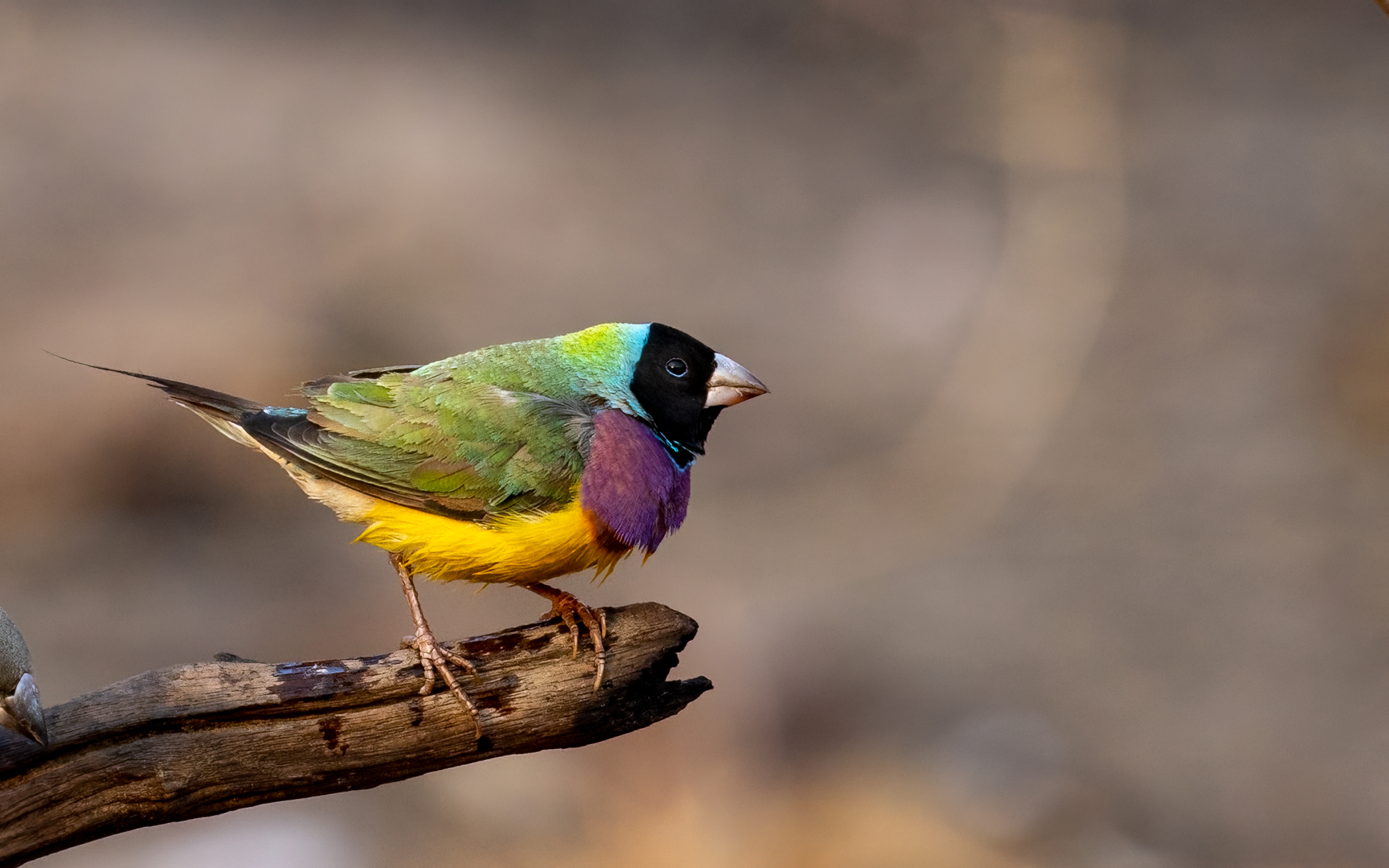| Common name | Koala |
| Scientific name | Phascolarctos cinereus |
| Type | Marsupial |
| Diet | Herbivorous |
| Average lifespan | Between 13-18 years |
| Size | 60-85cm long and between 4kg and 15kg in weight |
There’s nothing more Aussie than a koala up a gumtree, and these iconic marsupials are a well-loved species that are found nowhere else in the world. With their habitat sadly under threat, and numbers declining, the koala is the last surviving member of the Phascolarctidae (pouched bear) family and needs our protection.
Often wrongly referred to as a bear, koalas have a stocky body, with no tail, and are covered in a thick ash-grey fur with white underbelly. A large round head, fluffy ears, and a distinctive black leathery rectangle-shaped nose, make this animal unmistakably unique.
Found in patches across Australia, numbers are in decline due to land clearing and habitat loss, but koalas can still be found along the east coast of Australia from northern Queensland to southern Victoria as well as south-eastern South Australia. Depending on their location, koalas vary in size and colour. Animals living in the southern parts of Australia are usually larger in size with thicker fur than their northern cousins, which may be a possible adaption to combat the cooler weather. Male koalas are also generally up to 50 per cent bigger than females.
Feeding exclusively on leaves from certain varieties of eucalyptus trees, this diet is relatively low in nutrients which gives the koala little energy to spare. The fibrous nature of eucalyptus leaves also makes them tricky to digest, but the koala has a long caecum which is part of the intestine, to help pass things through. An adult koala can munch on between 500grams to 1kg of leaves each night and relies on supplies from a series of ‘home trees’ within its range which overlap with those belonging to other koalas.
This fluffy tree-dwelling marsupial has a slow metabolism aimed at conserving energy and spends up to 20 hours a day sleeping. Koalas are classified as nocturnal, but they still sleep for part of the night and sometimes move about in the daylight hours.
Territorial and solitary animals, koalas use several sounds, including growling, belching, and bellowing to communicate with each other. Adult males have scent glands on their chest which they rub on trees to mark out their territory. Koalas mate in spring through to early autumn and a tiny joey is born 35 days after successful coupling. Completely reliant on its mother, a joey is born around 2cm long or the size of a jellybean and uses its keen sense of smell and touch to climb independently to its mother’s teat. After feeding and growing for 13 weeks, the koala joey still won’t look around and open its eyes until it is 22 weeks old.
Once the juvenile koala is weaned from milk, it feeds on an unusual soft liquid faeces called pap, from its mother. This substance is thought to introduce the right bacteria to the joey which is necessary for digesting gum leaves. After a full six months in the pouch, the joey then hitches a ride on mum’s back or abdomen but still returns to the pouch to drink milk until it grows too big to fit! Eventually leaving the shared home range and mother between one and three years of age, the koala needs to find its own specific home range of trees which is either a new area of the forest or a space left vacant by a dead koala.
Tree conservation is extremely important to the ongoing survival of the koala, with every forest having its own ‘carrying capacity’ – the amount of available gumtrees within any forest can only feed a certain number of this species, making the protection of potential koala habitat extremely important to the future of this fluffy Aussie icon.

